#exhaust hood canopies for sale
Text
Simco discusses several factors to think about before buying an exhaust hood canopy.

Simco has uploaded a new piece of content on its website. Here, the agency has listed some crucial elements. One needs to think about these elements before buying exhaust hood canopies. The post's primary purpose is to make the users check every aspect of the item. It will help them make a conscious decision and not regret their judgement later. The content has been co-produced by many stakeholders. These include content creators, graphic designers, and researchers. They have previous experience in the catering and hospitality industry.
According to one of the esteemed employees in the agency, "The hood made of steel is one of the most used kitchen equipment. This item provides the benefit of soaking pollutants. The pollutants include contaminated air, smoke and grease from the kitchen. They then send them outside to make the surroundings clean. One needs personalised range canopies in the present climate. It helps boost work efficiency. This is because the health situation is dire & everyone thinks about their health. Besides, every kitchen owner prefers to add environment-friendly equipment to their commercial pantry. Such addition results in the swiftly increasing acceptance of specific appliances. These products expertly perform all the needed daily activities. Advanced technology has seeped into every mechanical thing on the planet. This feature has resulted in the formation of more efficient and sophisticated appliances. But, such changes have rarely affected the typical canopy. Most users don't know it requires a specialised opinion to select a product like this. Most kitchens are clueless about this aspect. So, we thought of writing a blog. This will make them aware of the required considerations. Everyone must take these considerations before buying such a product."
Check the kitchen thoroughly and decide on the ideal space. It is one of the components discussed in the blog. The content raises a point. It's that one needs a specific amount of space. The space is required for the product's functionality & the installation process. It depends on the kitchen layout. The content further states another thing. The accepted guideline is to install the canopy 24-30 inches above the stove. So, one can always follow it. But, one must read the dealer manual to be sure before attempting the mentioned above method. The blog further says that one can set up these canopies in the attic or on the wall. One can also install them on the ceiling, as per the design. Contact a suitable exhaust hood canopies distributor in Sydney & Melbourne.
Checking the fan's power is another efficient component. One must study it before thinking of buying. The content stresses that determining the fan power is an important consideration. It depends on the food preparation space. It decides the appropriate energy the hood fan needs to omit the polluted air and repel all the foul odours. The write-up also states to choose a specific product. It would be better to purify the air in a particular location at least eight times per hour.
As per the post, selecting an item that makes the least noise is another kitchen need. The content says that an awning needs to be long-lasting and robust. But, it is futile if it emits an ear-splitting sound every time one starts the device. Instead, the kitchen owners should choose a model that does not work in a significant location by moving the air. It must enhance its functionality by attracting air towards the hood perimeter. According to the content, such a feature makes the hood more effective. It also reduces the noise level. One should contact the leading exhaust hood canopies manufacturer in their area. It will help the company get superior products.
To know more about the crucial pointers before buying the device mentioned in the content, visit https://simcogroup.com.au/.
#exhaust hood canopy#exhaust hood canopies#commercial exhaust hood canopy#commercial exhaust hood canopies#exhaust hood canopies supplier#exhaust hood canopies distributors#exhaust hood canopies manufacturer#exhaust hood canopies for sale#exhaust hood canopies sydney#exhaust hood canopies brisbane#exhaust hood canopies melbourne#exhaust hood canopies perth
1 note
·
View note
Text

Got a crazy one for you today. I still can't get over it. I live near this, but thanks to Curieously for bringing it to my attention. I had no idea. This is Horizon House in Fort Lee, New Jersey, built in the 1960s- there are several buildings. It was always THE most prestigious place. How I always wanted to live here. My mom, who was a decorator, had several clients there. Okay, but here's where it gets weird- this is a glam penthouse for sale. 2bds, 3.5ba, yet it's only $190K. I won't reveal why until the end. You will be shocked. Curieously and I are still talking about it.


The sunken living room is very large. Walk down marble stairs.


The view is New York City across the way. That's the Hudson River dividing NJ/NY and there's also a view of the George Washington Bridge (circled) leading into NYC. (Traffic is a bitch, though, if you're commuting to the city.)


It's very open and spacious. You can even fit a baby grand piano in here and look at the cool canopy over the dining area.

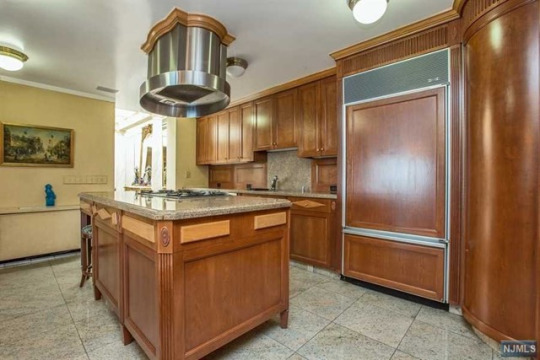
Big kitchen- love that exhaust hood.

The kitchen is so large, it's an eat-in kitchen. Look at the big table that fits.
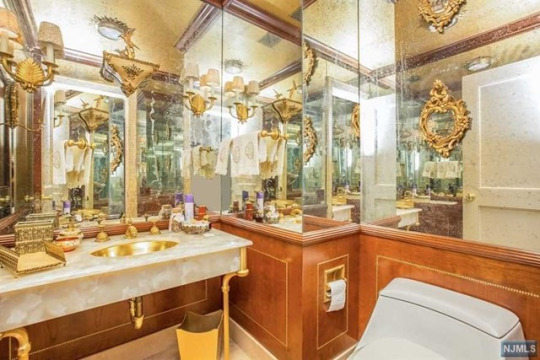
Check out this guest powder room.
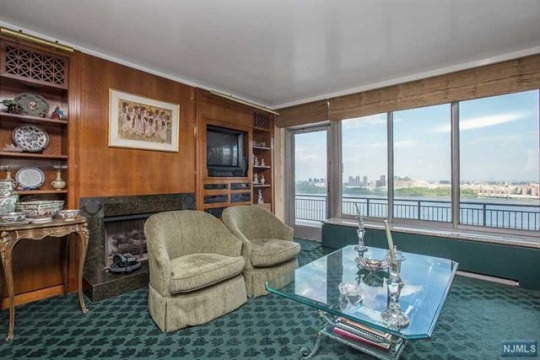
This is the family room- it's a bit dated, but it was built in the 60s, so it's mid-century modern. Got a great view, though, a fireplace, and a door to the terrace.

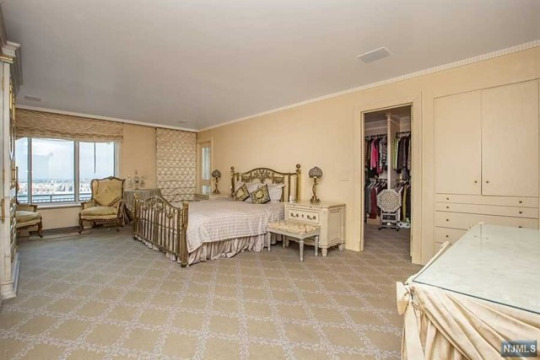
Huge primary suite. You can see the walk-in closet, too, plus a built-in.

Check out the marble bath. (Remember - all this for only $199K)

Isn't the 2nd bedroom cute? It's got nooks.
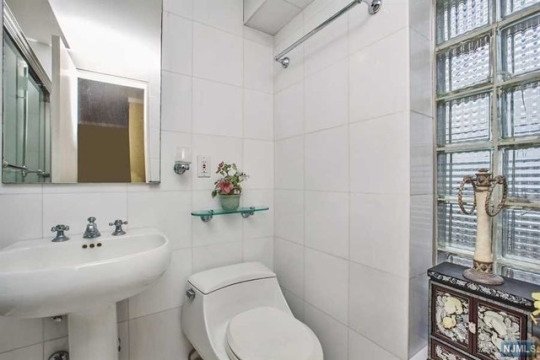
Bath #2.
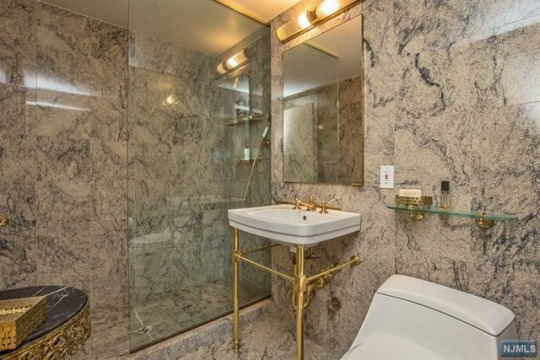
And, marble bath #3.

I wish my building had a lobby like this.

Resident's pool and patio.
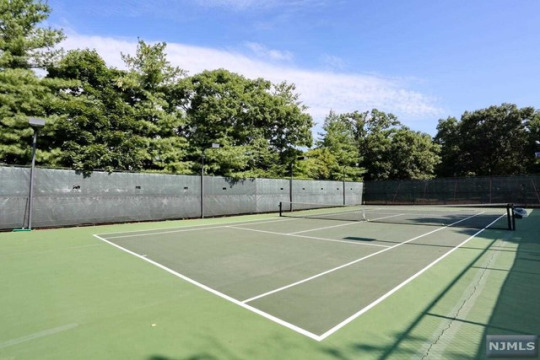

Tennis courts.
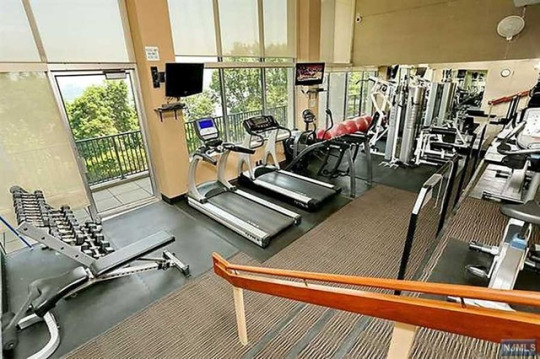
Gym.
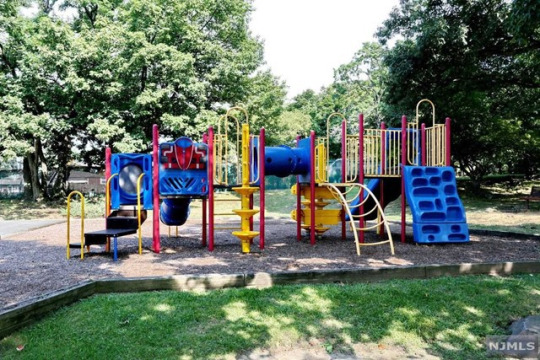
And children's playground.

Okay, so what's the deal? Well, apparently, it's only $199K to buy it, BUT, the HOA fee is a whopping $7,004.13mo! Oh, and Co-op board approval is required -income ratio 4:1. (B/c who the hell can afford that?) So let me get this straight. You pay a fee of $7Kmo. to live here and when you sell it you only get a measly $190K? How is this even possible? That's not all, though- it's an additional $98mo for parking/$106mo if you want valet parking. It's called a Stock Cooperative, which I really don't understand: A co-op is a way to own a primary residence, but where homeowners don't own their units outright; instead, each resident is a shareholder in the co-op itself.
#condos fort lee nj#horizon house condo#houses#house tours#home tour#co ops#submissions#WTF real estate
83 notes
·
View notes
Text
Protect Your Gas Pump Station & maintenance
Running a fuel pump station is not easy and worry-free at all. It includes several routines and responsibilities on the account of station owner. In order to maintain best and effective fuel performance and make your gas pumps function smoothly, it is recommended to follow some protective measures as mentioned below:
A mobile wash should take place on a regular basis at any gas station. Almost everything of a gas station can be washed – pumps, canopy, building, concrete pad, sidewalks, exhaust fan, hood and signs. Moreover, every gas pump station has a convenience store. As a station owner, it is your duty and responsibility to keep the area of business clean and secured.
Keep an eye at the flow rate at your gas dispenser. The flow rate should be less than 9gpm in general. If you find the flow rate significantly less than the standard rate, you must check the fuel filters in no time. This step can show you immediate warning indications of contaminations present in the fuel tank.

Best Protection at Gas Station Endurance
Try to keep your fuel completely water free. Water is an ideal atmosphere of microorganisms which can be the major cause of fuel contamination. Decide the way your fuel tank tilts or whether it is flat. Ensure that there is no water at the deep end of the fuel tank.
Keep water as well as other contaminants out of fill pipe contaminant sump. Liquids present in the sump almost finish off in the fuel tank. It is recommended to treat a fuel tank with fuel soluble biocide. The biocide is highly required to bring microbial contamination under control in your fuel tank as well.
If you are looking for Gilbarco dispensers for sale in order to enhance your business opportunity, you can browse the sites and check all details of their services. You can definitely take the best concepts in a brilliant world.
Cleaning & Maintenance go hand in hand
The gas pump stations should appear clean and attractive to grab the attention of target customers. At the same time, the fuel pump and its essential parts should work properly every time when customer arrives. In order to make sure that the equipments are in working order, they must undergo repeated checking and accurate maintenance at times. Most of the leading providers of gasoline dispensers for sale suggest their customers to take care of their fuel pump stations with regular maintenance support.
0 notes
Text
Artisan Kraft Fireplaces’ Offerings in Rustic Range Hoods and their Significance in Kitchen
Range hoods are an essential component in modern kitchens as it keeps the space clean and hygienic. The use of French country rustic range hoods even boosts the look and appeal of the kitchen. It is a beautiful interior décor idea that comes with numerous benefits for the kitchen and the adjacent space.

Artisan Kraft Fireplaces has an exclusive kitchen range of decorative range hoods and sinks made from marble and limestone, to create an ambiance of sophistication within your home. They offer lots of varieties in material and design to suit myriad preferences.
In this particular blog, we will discuss unique properties of range hood and array of advantages, which makes it an essential inclusion to the home décor.
What is a Kitchen Range hood?
A range hood is also known as exhaust hood or vent hood. The structure is like that of a canopy just above the stove or cooktop, with a fan enclosed inside. Kitchen range hoods are meant to suck the excess heat, oil, smoke, and smell and dissipate it up and away from the room and the cooking area through the range hood duct.
While the modular kitchen uses the stainless-steel kitchen chimneys, you can go with a more aesthetic approach with range hoods made from stones.
What are the Benefits of Range Hoods?
There is no denying that rustic or decorative range hoods beautify your kitchen, but there is more to a range hood than being just an interior décor accessory. A few of the benefits are listed below:
Comfortable Cooking
The most beneficial side of a range hood is the comfort that it provides to the cooking experience. It keeps the kitchen clean, free of odor and aids in the minimal build-up of grease around the cooking area. It prevents the house from smelling like food creating an environment of comfort.
Air Purification
A range hood extracts all the excess smoke, steam, and grease from the air. Cooking involves dissipation of all the aforementioned, inhaling which can cause damage to the health. The fan enclosed inside the range hood sucks all of that and releases it up the duct so the air inside the house remains fresh and clean.
Reduces Heat
Just like air purification, range hoods also suck away the extra heat that gets released when cooking. It keeps the temperature in the kitchen and around the cooking area normal preventing exhaustion from excess heat.
Enhancement of property Value
A good and functional range hood is an absolute necessity to improve the property value of your house. It comes in handy if you ever think of putting the house for sale. Decorative or rustic range hoods make your house look elegant, automatically boosting the market value.
Besides having an exceptional kitchen range, Artisan Kraft Fireplaces is famous for its inventory of travertine fireplace, marble and cast stone fireplace surround, decorative mantels and an array of fireplace tools and accessories at great prices.
Blog Source: https://www.artisankraftfireplaces.com/artisan-krafts-offerings-in-rustic-range-hoods-and-their-significance-in-kitchen
0 notes
Text
What type of lighting is used for growing cannabis indoors?
If you grow indoors, you need grow lights. But they can’t just be any lights. They must be capable of providing the type of light your crops need to boost healthy development and yield incredible flower.
You may have noticed that in recent years, the light-emitting diode (LED) has increased in popularity among growers. But you’ve likely also heard growers talk about bad experiences they’ve had with LED lights, recommending high intensity discharge (HID) lights instead. HPS grow lights have long been a go-to choice, and there is a lot of useful information on how to use them effectively.
So, What type of lighting is used for growing cannabis indoors?
HPS or LED: A Key Factor to Consider
One of the reasons you still hear people claiming that LED is not ready for commercial cannabis grows is because the reflectors from an HPS fixture mounted 4 ft from the canopy will provide a wide angle of light so the crop will receive light from the fixture directly above as well as the lights from the next row over and even 2-3 rows away. This light is coming in from different angles hitting the crop beneath the canopy leaves that are causing shadows from the light above. This does not happen if you are using an LED fixture that is a big panel of LEDs or made up of multiple LED bars where they have to be mounted 9-12 inches from the canopy. You get no crossover from the fixtures but only shadowing from the top of the canopy.
It was only after companies like P.L. Light and Philips* introduced LED fixtures specifically engineered for truss mounting in a greenhouse, that growers really adopted this technology. These products enabled even the indoor grower to maintain some distance between the LED fixtures and the plant canopy, and resulted in production similar to growing under HPS. (*In the United States, Philips has taken the stance that they will not support sales into the cannabis industry as it is not recognized to be legal by the federal government)
Advantages of LEDs over HPS
Efficiency – LED diodes are very electrically efficient, which could save you money over time (though the jury is still out when it comes to whether LEDs get better yields than HPS watt-for-watt). Additionally, where an HPS bulb needs to be replaced every few grows to maintain its brightness, individual LED diodes keep their brightness practically forever. With an LED grow light, it’s almost certain something else will break on the lamp before any diodes start losing their brightness.
Plug-And-Play – LED grow lights are plug-and-play which means you can simply hang up the lamp over your plants and plug it directly into any standard electrical socket. HPS lighting requires the use of a ballast; for smaller models it can be built-in, but larger HPS lights generally need a brick-sized external ballast.
LED Grow Lights Come With Built-In Cooling – Along the lines of being totally plug-and-play, most LED lamps have heatsinks and small built-in fans to help disperse heat up and away from the lamp, which lets them run cooler. On the flip side, even a small HPS bulb needs extra help for cooling, usually by venting out hot air using a fan and ducting.
Customized Color Spectrum – It is known that the color spectrum of light affects how plants grow. Unlike other grow lights which are pretty set in their color spectrum, each LED diode can be configured to emit light of a very specific color spectrum chosen by the user. This means that LED grow light color spectrums can be adjusted and customized in a modular way that’s impossible to achieve with any other grow light. I trust that full spectrum LED grow light is best for plants growth
So, Are LED Lights The Best For Indoor Growing?
As you can tell, there are definitely some advantages to going with an LED system, but whether they’re the best choice for indoor growing depends on a few factors. For a lot of growers, the low temperature, efficiency, lifespan, size and spectrum of LEDs make them ideal for indoor grows. Undoubtedly, LED grow lights is the best grow lights for indoor plants. Other growers, typically those running large-scale operations, prefer HID lights because they provide the most intense light. Of course, HIDs come with their own challenges — they consume way more energy than LEDs, and also force the grower to invest in additional equipment, like protective hoods and exhaust fans. But if your main goal is to maximize the quantity of crops that your garden produces, then HID is probably the way to go.
0 notes
Text
The Autozam AZ-1 Is the Ultimate Japanese Micro Machine
If you ever find yourself behind the wheel of an Autozam AZ-1, be prepared to be the center of attention. At the gas station, traffic lights, parking lots—pretty much everywhere we roamed around California’s scenic Monterey Bay area in the AZ-1—the sight of the tiny, Classic Red Japanese curiosity prompted one simple question: ��What is it?”
The short answer: a pint-sized, gullwing-doored, plastic-bodied sports car with a mid-mounted sub-1.0-liter engine and a name straight out of a Japanese anime. Built exclusively for sale in Japan by the now defunct Autozam (once a subbrand of Mazda) from 1992 to 1994, the AZ-1 was officially classified as a “kei car,” a vehicle engineered to meet the regulations of Japan’s smallest street-legal segment.
Generally speaking, kei cars are uninspiring transportation modules. Thanks to restrictions on overall size, engine capacity, and horsepower, they’re city cars through and through, built to serve a starkly utilitarian purpose. On the flip side, they’re affordably priced and designed to sip fuel. They’re also taxed at a lower rate than larger cars and cost less to register and insure. Although the AZ-1 met the kei-car mandate, it fell squarely outside of the boring box thanks to a unique blend of sport and style.
In the late 1980s, Japanese automakers, reveling in a booming domestic economy and benefiting from exploding sales, started to develop kei-sized cars that were actually fun to drive. The AZ-1 was born out of this mindset and owes its existence in large part to the design of two mid-engine Suzuki concepts from 1985 and 1987, the RS/1 and RS/3. As the story goes, Suzuki eventually abandoned work on the more radical RS concepts in order to focus on the Cappuccino, a traditional front-engine, convertible, sporty kei car that fell in line with the similar Honda Beat.
Cue Mazda, which took over development of the project in the late 1980s and installed Toshihiko Hirai as its product chief. (Toshihiko-san also held the same position on the first-generation Miata program.) By 1989, Hirai had three new AZ-550 concepts ready for that year’s Tokyo auto show. Type A looked much like the AZ-1 production car does, and Type B was slightly less dramatic with conventional doors. Type C looked like a mini-Group C sports prototype racer—right down to its finned BBS alloys. In the end, Mazda found the Type A most likely to return a profit. Roughly three years later, in September 1992, the Autozam AZ-1 went on sale.
At just shy of 11 feet long, the two-seater features short overhangs, chunky and straight-edged plastic body panels, and styling cues gratuitously borrowed from cars that could almost literally eat the AZ-1 for lunch. Its side strakes and high-profile rear wing hearken to the Ferrari Testarossa and F40, respectively. The front end, with its carved-out headlight pockets and hood scoop, mimics the Ford RS200 that terrorized the Group B rally car scene in the late 1980s. The side windows have only a small opening section, which is similar in scope to another ’80s dream machine, the Lamborghini Countach.
The AZ-1 charged onto Japanese roads powered by a Suzuki-sourced, transverse-mounted, twin-cam, 12-valve 657cc turbocharged three-cylinder making 63 hp and 63 lb-ft
of torque paired with a five-speed manual. Rolling on an 88.0-inch wheelbase, it also featured an independent strut suspension and four-wheel disc brakes. Unfortunately, even for a kei car, the AZ-1 proved too small and expensive for many, costing the equivalent of roughly $12,000 at the time for a car that struggled to comfortably fit two people. A Japanese recession did the rest, helping to usher the little sports coupe out of production by the end of 1994. The unintended side effect was that the AZ-1 is now perhaps the rarest kei-class sports car of its era. Although it stickered for less than a new Eunos Roadster (the Japanese market Miata), the AZ-1 was priced higher than the Beat and Cappuccino. Just 4,392 were built in all (plus 531 badge-engineered Suzuki Cara models), versus 28,000 Cappuccinos and more than 33,000 Beats.
The 1992 AZ-1 we’ve been starring in is owned by Mark Brinker, a Texas-based surgeon and enthusiast of interesting cars. (His collection includes several rare Japanese classics and the one-off Herb Adams Pontiac Vivant concept.) Brinker’s AZ-1 is an even rarer Mazdaspeed version, which is reportedly one of as few as 100 produced. It includes a factory body kit with a unique hood, front chin spoiler, and rear wing. Sport-tuned struts and springs, front and rear strut bars, a mechanical limited-slip differential, stainless-steel sport muffler, and unique alloy wheels (wearing narrow 165-width tires) were also part of the package.
Inside, the AZ-1’s white gauge faces with red needles look sporty, as does its three-spoke, leather-covered steering wheel—another Mazdaspeed option. The interior door handles are borrowed from the Miata, and the spare tire is stashed behind the fixed-back, high-bolstered seats, akin to the mid-engine Fiat X1/9. There’s very little in the cabin to distract from the task of driving—just simple climate and audio system controls on the center stack (all labeled in Japanese, of course) and not a whole lot else. The floormats are embroidered with “AZ-1 Exciting Micro Coupe.” Very Japanese.
Getting into the little ’Zam can be a challenge, though it gets easier with practice. Best to start by putting your left leg into the car first (remember, this is a right-hand-drive vehicle) then slide it carefully underneath the steering wheel as you scoot your butt into the driver’s seat. Then it’s just a matter of contorting your right leg enough to get it inside the car before you pull the door strap to close the gullwing door; it’s a good idea to duck down slightly as you do if you’re approaching the 6-foot range.
Once in, you’ll probably find that your left leg is somewhat pinched between the center console and the steering wheel and that you have limited mobility with your hands on the steering wheel—your left leg is blocking the space your left hand would use while making a left turn. The pedal box is also quite tight, but a pair of relatively narrow size 11 shoes didn’t find it too much of an issue.
On the road—any road—the Autozam AZ-1 turns heads, drops jaws and prompts questions. Lots and lots of questions.
Turn the key, and the AZ-1’s turbocharged three-banger fires up with a fairly mundane exhaust note that’s a bit of a letdown initially. But once you slot the shift lever into first, take up the clutch pedal, and give the ’Zam some throttle, the sound intensifies as the revs pick up. By 3,000 rpm the engine starts to come on cam, and by 6,000 rpm it’s feeling like a real sports car. There’s another 3,000 rpm to go before you hit the 9,000-rpm redline, and those final revs per minute sound outstanding, almost demanding that we let the revs soar before upshifting. The little subliter engine sings its turbocharged heart out, with a mechanical noise that sounds almost exotic yet all its own. It’s not what you’d call quick—0 to 60 mph takes about 10 seconds even given the vehicle’s scant 1,590-pound curb weight—but the sensation of speed in such a small, analog car is fantastic.
The non-assisted steering is heavy when navigating parking lots, but it lightens up nicely at speed while retaining plenty of feel and precision. Similar to the more modern Alfa Romeo 4C, when you move the wheel just off center, the car immediately starts to change direction. You can never relax, and it’s part of the reason the ’Zam feels like such a driver’s car. Toss it into a corner, and it will roll only slightly on its Mazdaspeed sport suspension before taking a set and holding its line through. There’s just so little weight, so little mass, it’s almost as if you’re wheeling a 1:1 scale version of a 1980s Micro Machines toy car.
Want one? Now that the feds allow you to lawfully import any car that’s at least 25 years old, it opens the door to bringing an AZ-1 of your own to the States, but be sure you check your state and local statutes before you drop as much as $17,000 on a great example. Get one, and you’ll be all but assured to have the only Autozam AZ-1 at your local cars and coffee. Just be ready to answer the inevitable “What is it?” question for the duration of the show.
AZ-550 concepts
Type A
Type B
Type C
Mazda and its subsidiary, Autozam, put a lot of effort into getting the design just right. So much so that it displayed three AZ-550 concepts at the 1989 Tokyo auto show and asked the public for feedback. Type A most closely resembles the production car, with a change from retractable to fixed headlights to lower cost and improve structural rigidity. Type B featured conventional doors, vertical headlights, and bulbous fenders, and Type C appeared as a Group C endurance racing prototype with a bubble-style canopy and racy rear wing. Type C was actually the most popular with the public, but Mazda officials decided Type A was the most viable.
For more classic Japanese cars, see some of our favorites from the inaugural Japanese Automotive Invitational show.
IFTTT
0 notes
Text
The Autozam AZ-1 Is the Ultimate Japanese Micro Machine
If you ever find yourself behind the wheel of an Autozam AZ-1, be prepared to be the center of attention. At the gas station, traffic lights, parking lots—pretty much everywhere we roamed around California’s scenic Monterey Bay area in the AZ-1—the sight of the tiny, Classic Red Japanese curiosity prompted one simple question: “What is it?”
The short answer: a pint-sized, gullwing-doored, plastic-bodied sports car with a mid-mounted sub-1.0-liter engine and a name straight out of a Japanese anime. Built exclusively for sale in Japan by the now defunct Autozam (once a subbrand of Mazda) from 1992 to 1994, the AZ-1 was officially classified as a “kei car,” a vehicle engineered to meet the regulations of Japan’s smallest street-legal segment.
Generally speaking, kei cars are uninspiring transportation modules. Thanks to restrictions on overall size, engine capacity, and horsepower, they’re city cars through and through, built to serve a starkly utilitarian purpose. On the flip side, they’re affordably priced and designed to sip fuel. They’re also taxed at a lower rate than larger cars and cost less to register and insure. Although the AZ-1 met the kei-car mandate, it fell squarely outside of the boring box thanks to a unique blend of sport and style.
In the late 1980s, Japanese automakers, reveling in a booming domestic economy and benefiting from exploding sales, started to develop kei-sized cars that were actually fun to drive. The AZ-1 was born out of this mindset and owes its existence in large part to the design of two mid-engine Suzuki concepts from 1985 and 1987, the RS/1 and RS/3. As the story goes, Suzuki eventually abandoned work on the more radical RS concepts in order to focus on the Cappuccino, a traditional front-engine, convertible, sporty kei car that fell in line with the similar Honda Beat.
Cue Mazda, which took over development of the project in the late 1980s and installed Toshihiko Hirai as its product chief. (Toshihiko-san also held the same position on the first-generation Miata program.) By 1989, Hirai had three new AZ-550 concepts ready for that year’s Tokyo auto show. Type A looked much like the AZ-1 production car does, and Type B was slightly less dramatic with conventional doors. Type C looked like a mini-Group C sports prototype racer—right down to its finned BBS alloys. In the end, Mazda found the Type A most likely to return a profit. Roughly three years later, in September 1992, the Autozam AZ-1 went on sale.
At just shy of 11 feet long, the two-seater features short overhangs, chunky and straight-edged plastic body panels, and styling cues gratuitously borrowed from cars that could almost literally eat the AZ-1 for lunch. Its side strakes and high-profile rear wing hearken to the Ferrari Testarossa and F40, respectively. The front end, with its carved-out headlight pockets and hood scoop, mimics the Ford RS200 that terrorized the Group B rally car scene in the late 1980s. The side windows have only a small opening section, which is similar in scope to another ’80s dream machine, the Lamborghini Countach.
The AZ-1 charged onto Japanese roads powered by a Suzuki-sourced, transverse-mounted, twin-cam, 12-valve 657cc turbocharged three-cylinder making 63 hp and 63 lb-ft
of torque paired with a five-speed manual. Rolling on an 88.0-inch wheelbase, it also featured an independent strut suspension and four-wheel disc brakes. Unfortunately, even for a kei car, the AZ-1 proved too small and expensive for many, costing the equivalent of roughly $12,000 at the time for a car that struggled to comfortably fit two people. A Japanese recession did the rest, helping to usher the little sports coupe out of production by the end of 1994. The unintended side effect was that the AZ-1 is now perhaps the rarest kei-class sports car of its era. Although it stickered for less than a new Eunos Roadster (the Japanese market Miata), the AZ-1 was priced higher than the Beat and Cappuccino. Just 4,392 were built in all (plus 531 badge-engineered Suzuki Cara models), versus 28,000 Cappuccinos and more than 33,000 Beats.
The 1992 AZ-1 we’ve been starring in is owned by Mark Brinker, a Texas-based surgeon and enthusiast of interesting cars. (His collection includes several rare Japanese classics and the one-off Herb Adams Pontiac Vivant concept.) Brinker’s AZ-1 is an even rarer Mazdaspeed version, which is reportedly one of as few as 100 produced. It includes a factory body kit with a unique hood, front chin spoiler, and rear wing. Sport-tuned struts and springs, front and rear strut bars, a mechanical limited-slip differential, stainless-steel sport muffler, and unique alloy wheels (wearing narrow 165-width tires) were also part of the package.
Inside, the AZ-1’s white gauge faces with red needles look sporty, as does its three-spoke, leather-covered steering wheel—another Mazdaspeed option. The interior door handles are borrowed from the Miata, and the spare tire is stashed behind the fixed-back, high-bolstered seats, akin to the mid-engine Fiat X1/9. There’s very little in the cabin to distract from the task of driving—just simple climate and audio system controls on the center stack (all labeled in Japanese, of course) and not a whole lot else. The floormats are embroidered with “AZ-1 Exciting Micro Coupe.” Very Japanese.
Getting into the little ’Zam can be a challenge, though it gets easier with practice. Best to start by putting your left leg into the car first (remember, this is a right-hand-drive vehicle) then slide it carefully underneath the steering wheel as you scoot your butt into the driver’s seat. Then it’s just a matter of contorting your right leg enough to get it inside the car before you pull the door strap to close the gullwing door; it’s a good idea to duck down slightly as you do if you’re approaching the 6-foot range.
Once in, you’ll probably find that your left leg is somewhat pinched between the center console and the steering wheel and that you have limited mobility with your hands on the steering wheel—your left leg is blocking the space your left hand would use while making a left turn. The pedal box is also quite tight, but a pair of relatively narrow size 11 shoes didn’t find it too much of an issue.
On the road—any road—the Autozam AZ-1 turns heads, drops jaws and prompts questions. Lots and lots of questions.
Turn the key, and the AZ-1’s turbocharged three-banger fires up with a fairly mundane exhaust note that’s a bit of a letdown initially. But once you slot the shift lever into first, take up the clutch pedal, and give the ’Zam some throttle, the sound intensifies as the revs pick up. By 3,000 rpm the engine starts to come on cam, and by 6,000 rpm it’s feeling like a real sports car. There’s another 3,000 rpm to go before you hit the 9,000-rpm redline, and those final revs per minute sound outstanding, almost demanding that we let the revs soar before upshifting. The little subliter engine sings its turbocharged heart out, with a mechanical noise that sounds almost exotic yet all its own. It’s not what you’d call quick—0 to 60 mph takes about 10 seconds even given the vehicle’s scant 1,590-pound curb weight—but the sensation of speed in such a small, analog car is fantastic.
The non-assisted steering is heavy when navigating parking lots, but it lightens up nicely at speed while retaining plenty of feel and precision. Similar to the more modern Alfa Romeo 4C, when you move the wheel just off center, the car immediately starts to change direction. You can never relax, and it’s part of the reason the ’Zam feels like such a driver’s car. Toss it into a corner, and it will roll only slightly on its Mazdaspeed sport suspension before taking a set and holding its line through. There’s just so little weight, so little mass, it’s almost as if you’re wheeling a 1:1 scale version of a 1980s Micro Machines toy car.
Want one? Now that the feds allow you to lawfully import any car that’s at least 25 years old, it opens the door to bringing an AZ-1 of your own to the States, but be sure you check your state and local statutes before you drop as much as $17,000 on a great example. Get one, and you’ll be all but assured to have the only Autozam AZ-1 at your local cars and coffee. Just be ready to answer the inevitable “What is it?” question for the duration of the show.
AZ-550 concepts
Type A
Type B
Type C
Mazda and its subsidiary, Autozam, put a lot of effort into getting the design just right. So much so that it displayed three AZ-550 concepts at the 1989 Tokyo auto show and asked the public for feedback. Type A most closely resembles the production car, with a change from retractable to fixed headlights to lower cost and improve structural rigidity. Type B featured conventional doors, vertical headlights, and bulbous fenders, and Type C appeared as a Group C endurance racing prototype with a bubble-style canopy and racy rear wing. Type C was actually the most popular with the public, but Mazda officials decided Type A was the most viable.
For more classic Japanese cars, see some of our favorites from the inaugural Japanese Automotive Invitational show.
IFTTT
0 notes
Text
RideTech 1970 Chevy Camaro
I saw the early Mustang one afternoon on an early Power Tour (1997, I’m pretty sure). That was when it was still a fairly intimate gathering and before there were way too many cars suffocating that trail. There were legs sticking out from the rear bumper (there’d been a small electrical fire that Rob Kinnan was able to easily extinguish with a beer he happened to be holding—further details never mind). Those substantial limbs belonged to Bret Voelkel and it was a bit before anybody knew anything about RideTech, probably not even Bret Voelkel.
Twenty years after that broiling tarmac story and dozens of pertinent products and integrated systems later, Voelkel was in a position, free to go nuts, doing stuff the rest of us can only imagine, only closing our eyes and ruminating happily. The RideTech 1970 Camaro and another one similar became the basis for an ambitious experiment. Two builds. One known as the 48 Hour Camaro … the other, the Track 1 Camaro. Yeah, sure, they’d be fun to whip on and try like hell to break; the thought amused Bret, but ostensibly research and development were his practical aspirations. Substance sayin’ something, rather than a flaky vanity plate caption sayin’ something.
The 48 Hour represents a basis for initial changes to engine, suspension, and the rolling stuff. It was designed as a magnet for components that required nothing more than holes and fasteners, OK, maybe a church key, but not one second of welding required for any of it. As a bolt-on car, it maintains a conservative place that the more complicated Track 1 rooter surpasses in all categories.
Bret thought that the naked fastener aspect was important, would be encouraging, and a place for the less experienced to learn about now and then what comes later. In fact, the car was converted in 48 hours for all to see, broken up into eight six-hour shifts, under a canopy in a parking lot. Bret: “This agenda was very tight. No matter how well you plan one of these chingos in advance, parts get chased at the last minute. And you know it’s never easy to build a car in a parking lot.”
It was done to prove something—the merits of a 100-percent bolt-on build, no trickery involved. The components include a new rear subframe-style named “unicradle.” It revolves around a four-link system. The stock but rewelded front subframe incorporates the RideTech TruTurn front suspension system, which includes a taller spindle to improve the camber gain and a raised spindle pin that lowers the car 2 inches free and easy. The steering arms are designed to correct bumpsteer and to accommodate up to a 10-inch-wide wheel with a 5.75-inch backspacing. The drag link bracket bolts onto the OE drag link to relocate the inner tie-rod end to minimize bumpsteer. Finally, the tie-rod assemblies integrate with the new steering arms and centerlink. Maybe the subtext here is “you can keep your original subframe.”
Volunteers queued up. Bret said Rick Love (Vintage Air), Chad Reynolds (BangShift.com), Chris Smith (Smitty’s Custom Auto), Mark Bowler (Bowler Performance Transmissions), Bill Fowler (Baer, Inc.), Mike Ballard and Josh Powers (Custom Image Corvettes), and Jeff Abbott (Painless Performance) were among them.
To begin with, the coupe Bret picked was a chicken. It was a gem. “I found it for sale at the NSRA Street Rod Nationals. It looked nice enough with a blue paintjob and your typical 350/350 drivetrain combination … and it has the cleanest original floorpan that I have ever seen, original primer still intact.” To this day, the 48 Hour maintains an all-steel body and components. Since the sheetmetal was exemplary, the shell prep was handled by RideTech’s R&D fleet-only own body shop. The floor had to be ventilated a bit behind the rear seat to make room for the protruding suspension upper links, but that was it.
Besides that, they inserted a few aftermarket props: Anzo USA headlights and Ringbrothers hood hinges. All trim is original. Kurt Blackglove and Dennis Niehaus did the painting dance, wafting the shell with PPG Velocity Orange. But it would be up in Nebraska where Tracy Weaver at his Recovery Room Hot Rod Interiors would finish the gut work. Tracy smoothed out the leather surfaces for the Recaros and laid some more cowhide on the door panels, as well. Since the Camaro was surely a road-going conveyance, Bret would be bringing a competent sound system and refrigerated air along with him.
The beautification process of the 48 Hour Camaro was countered by a few pertinent changes to the mechanicals. The TruTurn steering configuration ensures that 275-series tires on 10-inch-wide wheels would always fit without any body or chassis modification. Because the shape of the unicradle and four-link suspension is compact and more room was available, mini-tubs were unnecessary. Down there in its belly, Bowler Performance fixed the big 4L75E with a ProTorque billet converter and Sonnax gear ratio change that enable engine braking, high-rpm shifting capability, and the ability to hold Low gear with full pressure.
What fun, right? Bret says the most memorable experience had nothing to do with winning an award or special mention. The FM3 Marketing road trip Cars N Cones Charity Tour that begins in Indiana and ends in North Carolina, whizzes through six states with an autocross event every day. Bret: “The event benefitted a fellow enthusiast who is battling CCL, a form of bone leukemia. The camaraderie on Cars N Cones is tough to beat.” CHP
Tech Check
Owner: Bret Voelkel, Jasper, Indiana
Vehicle: 1970 48 Hour Camaro
Engine
Type: LS3
Displacement: 376 ci
Compression Ratio: 10.7:1
Bore: 4.065 inches
Stroke: 3.622 inches
Cylinder Heads: OE L92-style ports, CNC-ported, 68cc combustion chambers, 2.165/1.590 valves
Rotating Assembly: OE nodular iron crankshaft, powdered metal connecting rods, hypereutectic pistons
Valvetrain: OE 1.7:1 rocker arms, Lingenfelter springs, OE lifters and pushrods
Camshaft: Lingenfelter GT11 hydraulic (0.631/0.644-inch lift; 215/236-deg. duration), Lingenfelter rocker covers
Induction: Holley intake manifold, Holley Dominator EFI, Spectre Performance air cleaner, FiTech steel fuel tank, Earl’s braided steel lines
Ignition: MSD box and primary wires
Exhaust: Hooker 1 3/4-inch primary pipes w/ 3-inch collector and mufflers, 3-inch system
Ancillaries: C&R aluminum radiator and fan, Edelbrock water pump, Vintage Air alternator, Vintage Air Front Runner accessory drive, Painless Performance Pro Series wiring installed by Jeff Abbott (Fort Worth, TX)
Machine Work: Lingenfelter Performance Engineering (LPE)
Built By: LPE
Tuner: LPE
Output: N/A
Drivetrain
Transmission: Bowler Performance 4L75E, ProTorque LSXT billet converter w/ 2,600-stall speed (lock-up capability in all gears), Sonnax 2.84/1.55 gear ratio conversion
Rear Axle: Currie Turn 9 “Crate” w/ MillerBuilt floater ends, 3.25:1 gears, Wavetrac limited-slip differential, AZ Driveshaft custom aluminum prop shaft
Chassis
Front Suspension: RideTech dropped spindles, TruTurn tubular A-arms, TQ Series triple-adjustable coilover shocks, MuscleBar antisway bar
Rear Suspension: Four-link triangulated with rear subframe and R-Joint rod ends, TQ Series triple-adjustable coilover shocks, MuscleBar antisway bar
Brakes: Baer 13-inch rotors, Baer Track four-piston calipers, front; Baer 12-inch vented rotors, SS4 four-piston calipers, rear; Baer master cylinder; Earl’s braided steel lines and hard lines
Wheels & Tires
Wheels: Forgeline ML3C 18×10 front and rear
Tires: BFGoodrich Rival S 275/35 front and rear
Interior
Upholstery: Tracy Weaver Recovery Room Hot Rod Interiors (Plattsmouth, NE)
Material: Leather
Seats: Recaro, RideTech four-point harnesses
Steering: RideTech TruTurn assembly, Turn One box, Flaming River column, MOMO wheel
Shifter: Horseshoe-style w/ Shiftworks detent
Dash: Stock, sheetmetal gauge insert
Instrumentation: Classic Instruments AutoCross series w/ custom RideTech logo
Audio: Kicker KMC20 Entertainment Center, Kicker speakers/amps
HVAC: Vintage Air SureFit
Exterior
Bodywork: RideTech (R&D vehicle body shop)
Paint By: Kurt Blackglove and Dennis Niehaus at RideTech
Paint: PPG Velocity Orange
Hood: N/A
Grille: OE
Bumpers: OE
The post RideTech 1970 Chevy Camaro appeared first on Hot Rod Network.
from Hot Rod Network https://www.hotrod.com/articles/ridetech-48-hour-1970-chevy-camaro/
via IFTTT
0 notes
Text
Nine Favorites Spotted in the Rennsport VI Corral
When the clouds of Porsche 917 exhaust finally cleared from Laguna Seca and Rennsport VI officially wrapped, the Porsche celebration attracted a total of 80,000 fans. A not-insignificant portion of these folks brought along one of their prized P-Cars from their garage, parking it amongst friends in the corral area. The turnout was very eclectic, ranging from base-level Boxsters to rarified road-going homologation specials.
1974 Porsche 911 Carrera
While not as exciting and valuable as the 2.7 RS that immediately preceded it, the 1974-1975 2.7 Carrera offered the same powertrain and weight in a similar package. U.S. market Carreras are down on power and performance, but this one was hot-rodded with a 3.2-liter flat-six following its discovery in Tijuana, Mexico.
Porsche 993 911 Targa
Since its introduction in 1967, the Targa remains an integral part of the 911 lineup, even when sales are not as strong as either the coupe or the soft-top convertible. Departing from the collapsible center roof design with the arrival of the 993, the Targa morphed into a fixed-roof coupe with essentially a massive sunroof. This new glass canopy design continued through the 997 generation, eventually returning to its roots with the current 991 Targa.
Hot-Rod 993 Coupe
Speaking of 993s, check out this tastefully modified 993 coupe. We’re not entirely sure if it’s an original 993 RS, but it sports enough RS-style parts to capture our attention. Even if it’s mimicry, it’s an extremely well-done build.
964 Carrera Cup
This one took a bit of research. The history of both the 964 RS and Cup cars is quite tangled, but it appears this white coupe is one of just 45 cars created for the failed 964 Cup series. When the series never panned out, Andial took over the project and converted a number of these cars back to street-able spec, conforming with federal regulations.
930/Turbo-Look Coupe
This is another one of those corral mysteries. Devoid of both rear decklid script and a wing, we’re unsure if this is a 930 Turbo or just a Turbo-look Carrera (option M491). Either way, it looked great, with an updated front bumper and blacked-out wheels.
A Pair of 996 Turbos
Pity the 996. As far as Porsches go, it’s impressive how widely unloved this generation of 911 is. Serving as the first water-cooled 911, it sits deep in the shadow of the 993 that preceded it. Factor in sometimes-awkward styling, reduced build quality, and the crippling IMS issue, and Porsche snobs often look down on this revolutionary model. Still, variants like the 996 Turbo remain semi-desirable, having fewer problems and better performance than the base Carrera. Of the 996s in attendance, this pair of clean red coupes stood out.
Porsche 924 Carrera GT
No, not that Carrea GT. This 924 was one of roughly 400 produced for homologation purposes, aimed at bringing the Porsche crest into the Group 4 racing segment. Box flares, hood-mounted intake scoop, modified front bumper, and a power boost from the 2.0-liter turbocharged four-cylinder separated the CGT from the regular 924 Turbo. Power sat at 210 hp, jumping up to an impressive 280 with later, rarer iterations.
Unrestored 356C
Seeing any vintage Porsche in a state of disrepair is a rare sight these days. When you do find one, it’s nice to see what it looks like with dull paint, rusty panels, and leaky engine. This 356C was parked amid a field of Stuttgart’s shiniest, and it was almost cooler than the over-restored lot-mates.
Pre-A 356
Only at Rennsport will you find a split-window “Pre-A” 356 parked in a dirt lot. This is one of the earliest cars to wear the Porsche name, channeling more than a little VW Beetle than some would like.
The post Nine Favorites Spotted in the Rennsport VI Corral appeared first on Automobile Magazine.
from Performance Junk Blogger Feed 4 https://ift.tt/2IAm3ZV
via IFTTT
0 notes
Link
Summary:
“Commercial kitchen exhaust ventilation system: A typical kitchen ventilation system includes an exhaust hood or canopy, ductwork, fan system, and a means of providing adequate makeup air (air that is lost through the ventilation process).”
Get Sample Copy of Global Commercial Kitchen Ventilation Systems Market Report @ http://garnerinsights.com/North-America-Commercial-Kitchen-Ventilation-Systems-Market-by-Manufacturers-Countries-Type-and-Application-Forecast-to-2022#request-sample
The methodological analysis which is used to approximate and forecast the Commercial Kitchen Ventilation Systems Market starts with gathering data on vital vendors with the help of secondary research through various trusted sources that include news articles, presentations, journals and paid database. In addition, information which the vendors provide is also taken into consideration to analyze the segmentation of the market.
The impact of Porter’s five forces on the growth of the market has been also analyzed in the report. Referring to case studies, the report traces the historical development of the market. The demand for each of the product types has been assessed in the report.
Scope of the Report:
Commercial Kitchen Ventilation Systems Market research report brings to the table the Global market. Geographically this report is divided into various key Regions, and includes all major key Manufacturers in the world from United States, Canada, Mexico, the other regions can be customized as per user’s requirement.
Leading Marketing/Retailing Players Associated with the Commercial Kitchen Ventilation Systems Industry are: CaptiveAire Systems, Greenheck Fan, Gaylord, Air System Components, Halton, Daikin, Systemair, Unified Brands, Polypipe, Elta Group, Munters AB, HANIL ONEEX, Loren Cook, Flakt Woods, Melink.
On the basis of Product Types, the report breaches the Commercial Kitchen Ventilation Systems industry into: Wall Mounted Canopy Hoods, Island Canopy Hoods, Proximity Hoods, Eyebrow Hoods, Other.
On the basis of end users/applications, the report split the Commercial Kitchen Ventilation Systems industry into: Restaurants, Hotels, Hospitals, Enterprises, Schools, Others.
Check Discount of this report @ http://garnerinsights.com/North-America-Commercial-Kitchen-Ventilation-Systems-Market-by-Manufacturers-Countries-Type-and-Application-Forecast-to-2022#discount
The report covers forecast and analysis for the, Commercial Kitchen Ventilation Systems Market on a Global and regional level. The study provides historic data of 2012-2016 along with a forecast from 2018 to 2022 based on both output/volume and revenue. The study then describes the drivers and restraints for the Commercial Kitchen Ventilation Systems Market along with the impact they have on the demand over the forecast period. Additionally, the report includes the study of opportunities available in the Commercial Kitchen Ventilation Systems Market on a Global level.
Key features of this Report:
To analyze and study the GlobalCommercial Kitchen Ventilation Systems capacity, production, value, consumption, status (2013-2017) and forecast (2018-2022).
Focuses on the key Commercial Kitchen Ventilation Systemsmanufacturers, to study the capacity, production, value, market share and develop respect to individual growth trend and their contribution to the market.
To analyze competitive developments such as expansions, agreements, new product launches, and acquisitions in the market.
To strategically profile the key players and comprehensively analyze their growth shipmentplans in future.
Focuses on the Globalkey manufacturers, to define, describe and analyze the market competition landscape, SWOT analysis.
To define, describe and forecast the market by type, application and region.
To analyze the Globaland key regions market potential and advantage, opportunity and challenge, restraints and risks.
To identify significant trends and factors driving or inhibiting the market growth.
To analyze the opportunities in the market for stakeholders by identifying the high growth segments.
To strategically analyze each sub-market withs
Browse Complete Report Description & TOC: http://garnerinsights.com/North-America-Commercial-Kitchen-Ventilation-Systems-Market-by-Manufacturers-Countries-Type-and-Application-Forecast-to-2022
About Us:
Garner Insights is a Market Intelligence and consulting firm with an all-inclusive experience and vast knowledge of the market research industry.
Our vast storage of research reports across various categories, gives you a complete view of the ever changing and developing trends and current topics worldwide. Our constant endeavor is to keep on improving our storage information by providing rich market reports and constantly improving them.
Contact Us:
Kevin Thomas
Direct:
+1 513 549 5911 (US)
+44 203 318 2846 (UK)
Email: [email protected]
If you have any special requirements, please let us know and we will offer you the report as you want.
0 notes
Text
exhaust hood canopy
We are Australia's premier supplier of Commercial Exhaust hood canopy. We have the largest range of Commercial Exhaust hood canopy. Offer 4 Years warrant & accept bulk orders.
#exhaust hood canopy#commercial exhaust hood canopy#exhaust hood canopy supplier#exhaust hood canopy for sale#exhaust hood canopy sydney
0 notes
Text
Food Truck Ventilation - Here’s All that You Need to Know
Planning to launch a food truck? Well, you are not alone. The mobile food van industry has experienced some remarkable growth over the years and with the increasing trend to reach your customers instead of customers coming to you, the industry is predicted to enjoy more favourable market conditions in the years to come.

However, just like any other catering business, it is not all roses. Launching a lunch wagon comes with a bunch of regulatory implications apart from the challenges of steep competition and strict quality maintenance requirements.
If you are starting a mobile food business, it is essential that you first consider all the aspects and the requirements before making the leap. However, the good thing is, professional legal assistance, as well as loan facilities for a new roach coach, is not difficult to find.
How to start a food truck?
Begin with market research and planning. First, decide the place where you would like to serve. If you are planning to keep it fully mobile, decide the area you will prefer to cover. Always keep in mind, if you are planning to move, the regulatory norms will differ from one place to another and you need to keep a check on all of them.

Next, decide on the menu. Look for market saturation point for certain food styles and try to keep them out of your options. Decide on a menu that people would like to buy from a lunch wagon and not a dine-in restaurant. To start with, keeping your menu restricted within ‘food truck friendly’ foods can be a good decision.
Once you have finalized the menu, decide the commercial kitchen equipment you will need to run the business. The list will vary considerably depending on what you are going to cook but irrespective of the menu, you will always need a quality commercial exhaust hood canopy to run the lunch wagon safely.
Next comes the finance, insurance, and licensing of the business. We suggest opting for professional help to ensure minimum hassle and quick turnaround time.
Food truck ventilation – the importance
Ventilation is probably one of the most important considerations in running a food truck. When it comes to mobile kitchens, the ventilation system works at the core of it. It’s not possible to run any commercial kitchen without an exhaust hood canopy but when it comes to the lunch wagon, cooking in that limited space filled with smoke and vapour, is nearly impossible unless an efficient exhaust system takes care of it. It also helps to control odour. Apart from maintaining a proper environment the exhaust system also serves a bunch of other purposes.

The system sucks in oil and other particles that mix with the air during cooking, saving the truck and other appliances from grease accumulation which can seriously undermine the cleanliness of the truck. Grease accumulation will also damage the interior of your truck over time and greasy surfaces can even lead to safety hazards.
The ventilation also helps in maintaining the temperature within the truck and keeps the air clean from dirt and dust particles, thus preventing quick degradation of stored food and deposition of dirt on prepared food. It also plays an important role in reducing any kind of fire hazard.
So, now that you know why you should have a well-functioning ventilation system in your lunch wagon, here we begin with other considerations that you should keep in mind.
Regulatory concerns
· Before buying any commercial kitchen canopy for your mobile kitchen, first, consider any regulatory specifications set by the local council. Keep in mind that the regulations may change from one area to another if you are planning to do business in more than one location.

· Also, the position of the ventilation system in the lunch wagon is often regulated. The distance it should have from other appliances and the gap between the oven/burner and the canopy should be decided according to any existing norms or instructions from your supplier or local council.
· Some municipalities might even ask to include the fire suppression system within the hood itself. So, before making your purchase, check out the regulations in detail.
Customized or pre-fabricated
· If you are looking for a food truck exhaust hood canopy in Sydney, Melbourne or Perth, the first thing you need to decide is, do you need a customized version to suit the needs or a pre-fabricated one will suffice?
· The customized versions are always a better fit as they are designed with the requirements of your lunch wagon in mind. But the customized ones may cost you a bit more and your exhaust hood canopy supplier might take more time to deliver it.

· On the other hand, the pre-fabricated variety suitable for food trucks, in general, might be a good fit for your requirements as well because these systems are designed keeping the basic lunch wagon specifications in mind.
Roof mounted or wall mounted
· For mounting the external exhaust ducts there are two options, you can mount them either on the side or on the roof of the truck.
· Some municipalities might have a specification regarding the mounting position as well, so consider that to start with.
· If you are planning to go for roof mounting, consider the height of any bridge that you must cross on the way because mounting it on the roof will naturally add to the height.

Simco Hood DH1800 is a high-quality stainless steel hood system, perfectly suited for food trucks using only electrical ovens and appliances. This ductless model eliminates the hassle of mounting the external exhaust pipes and gives high flexibility as far as mobility and placement are concerned because of the castor fitted, compact design. It is ideal to fit 3 to 4 electrical appliances of 8Kw max power each. It comes with a quiet motor and LED lights to give the truck interior an enhanced look.
Simco, one of the best commercial kitchen equipment suppliers in Australia, boasts of an expansive collection of premium quality canopies and exhaust hood systems that strictly meet the Australian standards and ensures maximum longevity. Keeping new businesses in mind Simco is now offering exhaust hood canopy for sale.
#exhaust hood canopy#exhaust hood canopy supplier#exhaust hood canopy for sale#exhaust hood canopy in sydney
0 notes
Text
6 benefits and advantages of exhaust canopy
Well, exhaust canopies or exhaust hood canopies deserve more credits than we normally give them. They might look like a simple and space consuming addition to the cooking area but, they have a major role to play in making the kitchen workable. Having the right canopy in your commercial kitchen is not only a statutory regulation but also a code that lies at the centre of the safety of your business.
So, if you think spending on a commercial kitchen canopy is just another additional expense that you must bear, think again. This system is more necessary and vital for your establishment compared to any other commercial kitchen equipment you might have spent on.

Now, without going into any more ado, let us cut to the chase. Here are the benefits and advantages of exhaust canopies that make them an essential part of every commercial kitchen. Check these and you will know why the investment is necessary and why you should spend on a quality product even if it is priced a bit high.
1. Improves air quality
The first and foremost benefit of a proper exhaust hood is that it helps to improve the air quality of the kitchen. In commercial cooking areas, where a lot of cooking, frying, searing, and grilling are going on all the time the air quality naturally deteriorates, because no matter how big it is, after all, it is an enclosed space.
The hood removes all the smoke, steam, grease, and other potentially toxic particles that are formed while cooking. It sucks in all the undesirable gaseous elements from the room and expels them out along with the grease and smoke, helping to improve the indoor air quality to a great extent. Better air quality is not only related to safety but also the health and wellbeing of your employees working there.
2. Controls heat
Your commercial exhaust hood canopy is certainly not going to replace the air conditioning system, but it helps to control the heat generated during cooking considerably. A lot of heat is produced from the open flames, ovens, heaters as well as the heated pans and other tools. This heat needs to be neutralized to maintain a comfortable temperature.

The canopy removes hot air and steam and thus helps in maintaining the indoor temperature. It also reduces stress on the air conditioning system. If you are using a ductless system it will filter the air produced during food preparations and put it back to the kitchen, helping to maintain a healthy air quality and temperature.
3. Mitigates odour
The smell from raw meat and fish as well as the fumes produced during cooking can seriously deteriorate the kitchen environment. You do not want your commercial establishment to smell fishy, right? The hood works a great deal to keep your cooking area free from odours and unwanted smells.
While removing unwanted gases and toxic airborne particles, the hood also removes odour thus keeping the area smelling fresh and hygienic, which otherwise will be a challenge for commercial cooking areas.
4. Better health for your staffs
The health of your staff, including the chefs and other associates, really matters to run your business with success. Staying the whole day in a stuffy and heated area with poor ventilation can take a serious toll on health, which can lead to frequent leaves and stress on your employee health benefits.
Moreover, a proper and hygienic environment is necessary to keep your employees in the right mood to work and deliver their best. As already noted, a stainless steel hood plays a major role to maintain the right environment in the cooking area thus helping your staff to work more efficiently throughout the day.
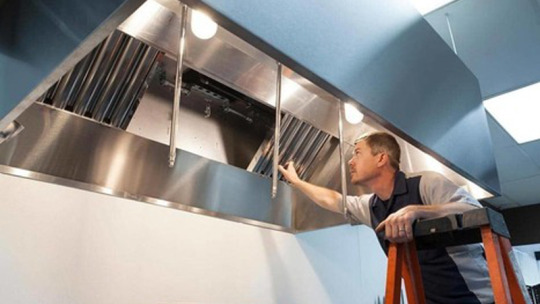
5. Easy clean up
When it comes to commercial kitchens, cleanliness is as important as anything. It is not only about regulations set by the authorities of the place but also a basic requirement to prepare and serve healthy and hygienic food to your customers. Clean up can be a messy thing for the commercial cooking areas considering the amount of cooking and use of oil that goes on every single day.
Greasiness is one of the major challenges you face to maintain a clean kitchen and a stainless steel hood makes this task simpler by collecting the oil and grease from the air in the grease drain tray, which then can be cleared with much ease. It not only saves the walls, ceiling from getting the greasy patch but also saves the other equipage and appliances in the cooking floor from getting dirty.
6. A stylish addition
If you are spending on a stainless steel exhaust hood canopy Sydney, it is going to be more than just working as an efficient exhaust. A canopy can give your kitchen a stylish look that will naturally add to the environment of the space.
Moreover, the best quality equipage sold by the top exhaust hood canopy suppliers of melbourne or sydney come with LED lights that can brighten up the cooking area. A premium canopy adds to the value of your property and gives you service worth all the investment. They need minimal maintenance which mostly involves routine cleaning depending on the amount of cooking in a day.
However, to get the best service and effectiveness, it is important to spend on a quality product and the prominent exhaust hood canopy suppliers can provide you with the best options.

So, if you are staying in perth, melbourne or sydney before you spend on a canopy or any other commercial kitchen equipment, do your research and visit the right supplier for the best product. You can also grab exhaust hood canopy for sale from the top suppliers if you keep an eye on the various discount offers they roll out from time to time.
#exhaust hood canopy#exhaust hood canopy for sale#exhuast hood canopy supplier#exhuast hood canopy sydney
0 notes
Text
Selecting and Sizing Exhaust Hoods
Canopies are one of the commercial kitchen equipment that most probably generates the maximum debates regarding the ‘best-fit’ for a commercial kitchen. The many variations of commercial exhaust hood canopy make the task even more complicated. The exhaust system of a commercial kitchen is a serious factor that needs proper planning and installation not only to meet the regulatory norms but also to ensure the proper functioning of the cookery and a hygienic environment for the kitchen staff.

Selecting and sizing of commercial kitchen canopy depends on multiple factors. In this article, we will discuss these factors in detail, so that business owners can make the right choice depending on their requirements. This article will also help kitchen owners to understand the reasons that can affect the efficiency of canopies negatively.
What makes kitchen exhaust complicated?
The heat produced from the cooking equipment can be removed mostly by an exhaust fan because the hot air naturally rises to the top. But when grease, smoke, vapour, and other organic volatile particles mix with the hot air, a simple exhaust fan becomes quite ineffective. This is where the exhaust hood canopy comes into the play. However, to get the right results, the right power of the canopy is paramount and here are the top factors to consider,
The Cooking
The menu of foods to be cooked under the canopy and also the type of cooking appliances to be used under it are the major considerations, because the amount of heat, smoke, grease required to be cleared out by the vent system depends on these factors.
Depending on the amount of grease, smoke, vapour, heat, and the strength of thermal plume produced, appliances are categorised into different types. While the light or medium-duty appliances produce less of all these elements, for heavy and extra heavy-duty appliances the amount is much higher, and hence higher power is needed.
The strength of thermal plume varies considerably depending on the cooking process as well. Many appliances, like the ovens, have minimum thermal plume strength until they are opened. While non-thermostatically controlled open flames show steady and strong thermal plume, the same is much lesser for thermostatically controlled cooking appliances like fryers and griddles.
The high plume should be captured by the vent system and removed immediately to mitigate any chance of heat build-up or fire incidents. Foods with a high amount of fat produce more grease and smoke than the ones with less fat, so what you are cooking is also a major consideration.
The Hood
The style and features of the hood directly impact its vent rate. The installation also has a considerable effect. The different types of hoods have different capture areas and are installed at different positions and distances from the appliances.
It has been shown that a single island hood needs more power than a wall mounted hood for removing an equal amount of grease, smoke, heat, and other elements generated during cooking. At the same time, it was also demonstrated that the same task can be done by a proximity hood with an even lesser exhaust rate.
This drop in performance for different types of exhaust hood canopy Sydney, Melbourne, Perth can be explained by their design and installation. Even when the proximity vent is installed at a gap from the appliance, efficiency reduces considerably and for clearing heat and grease of the same amount, a higher power is required.
Side panels are quite effective to improve the efficiency of kitchen vents. The efficacy can also be increased by adding features like angles or low flow jets. The cross draft is another factor to consider as it can reduce the effectiveness. The effect of the cross draft is maximum in island canopies.
The Makeup Air
The layout and positioning of the air-controlling systems in the area including the makeup air supply system have a direct impact on the exhaust rate of the canopy. Outlets of air-conditioners and makeup air supply can disrupt the thermal plume thus making the canopy ineffective or less effective.
The air removed by the exhaust system should be replaced through transfer air, diffusers, internal supply, or any combination of these three. Improper working of the makeup air system can take a serious toll on the capacity of the canopy. Also, proper placement of the air outlets and inlets with respect to the hood is important.
Commercial canopy for sale
So, now you have a clear idea about the factors you need to keep in mind for selecting and sizing vents. For more guidance, you can contact a specialist of the field or the top
canopy suppliers
might also be able to help you with proper technical information. For the best effectiveness always spend on high quality kitchen vent systems. You can also buy the
exhaust hood canopy for sale
to save on budget. For a commercial kitchen, proper equipment and appliances are necessary. Quality tools are expensive but for smooth functioning, they are essential because they do not only give long service but also ensure better workability.
0 notes
Text
7 essential tips for choosing a commercial stainless steel hood
A proper exhaust system is an essential part of every commercial kitchen. It is not only mandatory to have an effective exhaust system installed in your commercial establishment but also vital to maintain a proper and hygienic environment in and around the cooking area. High-quality stainless steel hoods are always a great option to ensure maximum efficiency while adding a smart look to the cooking area.
But before you spend on it, it is important to consider a few more things apart from the look. Here are the 7 essential tips for choosing the right commercial stainless steel hood for your commercial kitchen.

1. Check out the norms
Before you take any decision regarding the exhaust system to be installed in the cooking area, consult the standard codes for restaurants or hotels in your area to make sure that you are spending on commercial kitchen equipment that will meet all the statutory needs.
Depending on the size of your kitchen and the amount of cooking expected to be carried out during a full working day, the specifications regarding the size and type of the canopy will vary.
So, first get the specifications, if any, and then move to the next step. The prominent stainless steel hood supplier of your area might also be able to give you a good idea about the size and type you will need for your kitchen.
2. Decide the type you need
There are different types of hood exhaust systems and you need to buy one according to your requirements. If your commercial kitchen area is larger and divided into different segments for cooking, baking, grilling or other types of preparations, you might need more than one type of exhaust canopy as per your needs.

Type 1 exhaust canopies are ideal for the main kitchen area where frying and searing is carried out. This type of system is installed over grease-producing appliances like fryers, grills, and griddles. Type 2 exhausts on the other hand are suitable for installation over appliances that primarily produce vapour and heat.
There are also ductless and with duct canopies. While the ones with ducts take the air with the grease and smoke out of the room, the canopies without a duct particularly depend on advanced air filtration and they push back the air after removing any grease or smoke from it.
So, when you are looking for stainless steel exhaust hood consider the type of canopy you need.
3. Know the equipment that goes under your canopy
Keep in mind that the canopy is only a part of the total exhaust system. To make it functional and effective you need to install other equipment with it. However, for ductless exhausts, you might not need any of them. But if you are using one with a duct, you will need other accessories as well.

You will need an exhaust fan to draw out the air and fumes. You might also need to install a supply air fan or makeup fan to put air back into the cooking area so that a proper and airy environment is maintained within the establishment. You might also consider installing a fire suppression system, if needed. If you are in melbourne or perth it is best to check out if there is any code already set by the authorities for commercial kitchens.
4. Always opt for quality
Once you know the type of exhaust hood canopy you need for your kitchen, it is time to focus on the quality. Keep in mind, every stainless steel hood is not the same and even all stainless steel is not of the same quality.
While a canopy made with a thicker steel plate might be preferred generally, it is important to keep in mind that the higher thickness of the plate naturally adds to the weight of the equipment. So, it is important to consider both the factors and strike the right balance.
Check out if the equipage has fully welded corners as well as the right design and built to ensure maximum longevity. The top brands from melbourne always manufacture quality products and hence when purchasing a stainless steel hood Sydney, opt for a renowned brand with a good reputation in the market.

5. Don’t miss out the filters
The filters make an essential part of every commercial kitchen canopy. So, the equipment must come with filters. If not, then it is not the right product to spend your money on. Taking a sincere look at the quality of the filters is vital as well.
Most of the time, standard honey comb filers are used but it is important to make sure that they are built with material that will provide service for long for minimum maintenance. The proper thickness of the filter material is also desirable.
6. Consider the features
Canopies for commercial cooking areas are not characteristically very feature-rich, but they should have some basic features for ease of use. The grease drain tray should be easily removable and must have sufficient holding capacity so that it doesn’t need frequent clearing.
The canopy should be fitted with LED lights that will not change the food colour drastically but will efficiently compensate for any light loss under the canopy. Vapour proof toughened glass panel lights are best as far as effectiveness and longevity are concerned.
If you are buying stainless steel hood sydney, also make sure that it is designed to make cleaning and maintenance simple.
7. Buy from a trusted supplier
When you are spending on commercial kitchen equipment, it should be worth every penny spent. Be it the quality, the built or the features, everything should justify the price point. Buying the stainless steel canopy from a trusted stainless steel hood supplier from Australia is important because it ensures that you get the best product for the best price.

If you are concerned about the price, you can always grab stainless steel hood for sale by the top commercial kitchen equipment suppliers of Sydney. A trusted business is always the best place to spend your money as it gives you the best value.
#stainless steel hood#stainless steel hood supplier#stainless steel hood for sale#stainless steel hood sydney
0 notes
Text
How can Commercial Kitchen Equipment breathe life into your kitchen?
Your dream restaurant is going to open, and you are done with the interiors. You take a walk around the newly installed fittings of your restaurant and look at the gleaming tiles and marvel at their beauty. The glinting white tiles, the glossy linoleum flooring, and the smooth glistening counters of your commercial kitchen leave you in awe of your place. It is when your eyes flicker around the empty spaces that are gawking at you that you really start wondering about necessary products. You are then pushed to think about the daunting task of finding the necessities.

Running a successful restaurant is not just about designing your workspace but getting the right commercial catering equipment. It’s the commercial kitchen equipment that adds to the feel and tone of your workspace. We have a wonderful guide for you that will help you decide when it comes to buying the right kitchen equipment. However, before investing you should consider their quality, price, ease of use, and cleaning, and must choose the right supplier.
Here's your list of absolute necessities:
Refrigerators and Freezers
The refrigeration unit will be the first necessity that calls for your attention. For maximum efficiency both in terms of ease of food preparation and energy, it is important to choose the right commercial refrigeration equipment. The reach-in coolers, walk-in coolers and restaurant freezers are the different types of refrigeration units that you can pick. The style you choose will depend on your specific needs and your restaurant type. You will have a place to store all the perishable food and keep it fully stocked with a proper refrigeration unit in place. The quality of your food depends on the quality of the refrigerator you opt for. Make sure you make the right choice.

Sinks
Vital to any hospitable space are sinks as they look after all your cleaning needs. Used for food preparation, hand washing and dishwashing, you cannot go ahead without one of these. It is always recommended to choose stainless steel sinks as they ensure cleanliness and hygiene. To meet the health and safety requirement, you will have to install a triple wash station and a dishwashing machine as well as have a dedicated handwashing sink. The Simco Group is one of the best commercial kitchen equipment suppliers of a variety of stainless steel sinks in the market.

Commercial ranges / Cooking line
This range offers cooking apparatus which is the powerhouse of the hospitality domain. It is important to choose the right one that meets your cooking needs which can be electric or gas. Commercial gas cooktops are more popular because of their ability to provide precise instant temperature regulation. Always purchase new cooking ranges from time to time as the iron of the used ones gets worn out though it might not look rusted from outside.

Benchtops
For the visibility of your business, the range that plays a key role is benchtop catering equipment. The different types of benchtops are stainless steel, reconstituted, natural, concrete and solid surface benchtops. Choosing the right material for the tabletop is crucial because it adds to the visual appeal of the food along with facilitating job efficiency.

Shelving
Uncluttered shelving exponentially adds to the ease your kitchen offers. Shelves are vital to productivity and space management. For storing the perishable and the non-perishable food, and for storing various appliances, properly installed shelving can be a great solution. Steel shelves are recommenced wherever possible, as they are durable, robust, can withstand heavy loading and the harsh environmental conditions.
Food prep equipment
Inadequate food preparation space slows the preparation process. Food prep units are essential as your staff will be constantly using it for different types of prep work. Stainless steel is the most popular choice for food prep counters as they are sturdy and bacteria resistant.
Benches
Along with providing enough workspace, benches also add a decorative touch. Especially steel benches with splashback are important in areas where water is involved. These benches provide an affordable addition with easy maintenance. Our extensive range can get you plenty of choices and you are free to settle for what's best.
Commercial exhaust hoods, canopies and fans
These are an indisputable necessity which is designed to extract and filter heat, smoke, fumes, airborne grease and steam, and draw air out of the building. The air is drawn and filtered by the exhaust canopy. The areas which are not covered by the exhaust canopy, and where the air extraction requirement differs, work is taken over by the exhaust hoods. The volume of the activity taking place in your work space determines the materials of these hoods. The most popular choice is the stainless steel hood as they are durable and attractive.
Other Equipment
Along with the above essential kitchen needs, you will also need other requisites that can get your workspace running.
Here is a curated list for you:
● Mixers
● Slicers
● Ovens
● Food Processors
● Safety models
● Washing models
● Gas or electric grill
● Microwave
● Sharpening Stone
● Ice maker
● Serving ware
● Steam table
● Display system
● Point of sale system
● Ventilation
● Cooking utensils
● Bakeware and cookware
● Janitorial Equipment
Simco has been at the heart of the Australian Hospitality Industry for more than half a decade. We believe in providing the most contemporary solutions for all your commercial product demands.

We understand that at the heart of your restaurant is your kitchen. Choosing the right commercial kitchen equipment is essential for the success of your business. We know this can be an exciting yet difficult task. To ensure employee safety, it is highly required to buy appliances that are manufactured as per the local standards. The Simco Group deals with all types of commercial catering equipment. which meets the Australian guidelines and standards. As the investment in the restaurant business is quite heavy, you must have a workstation that provides a strong base and yield long term business results. Being one of the largest commercial kitchen equipment suppliers we will provide only the best lot to efficiently run your business.
#commercial kitchen equipment#commercial kitchen#commercial kitchen equipment supplier#commercial catering equipment
0 notes